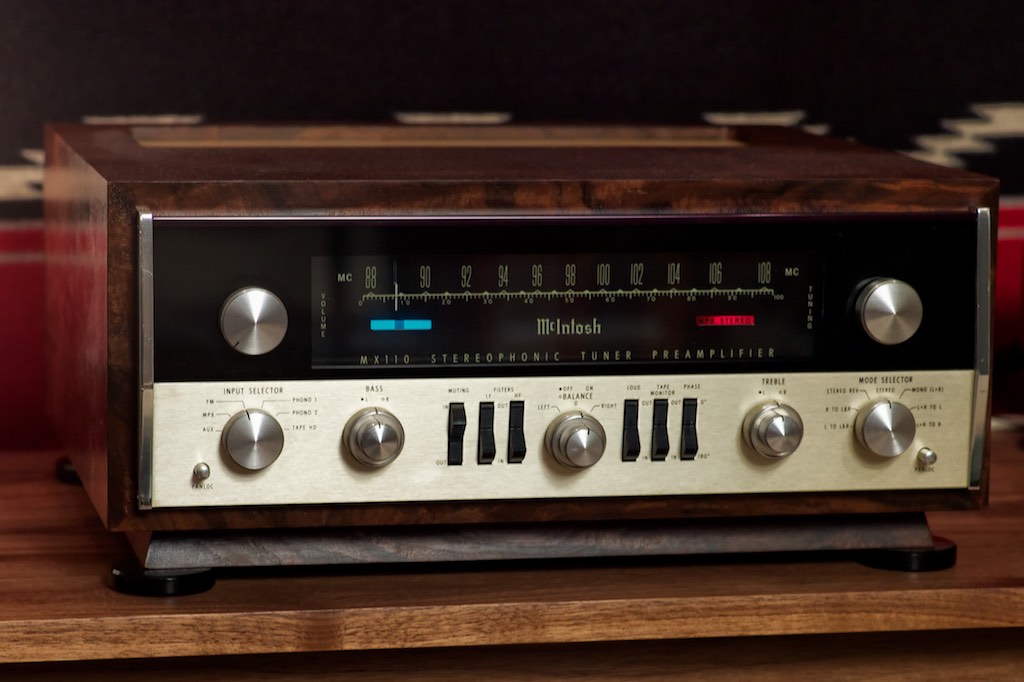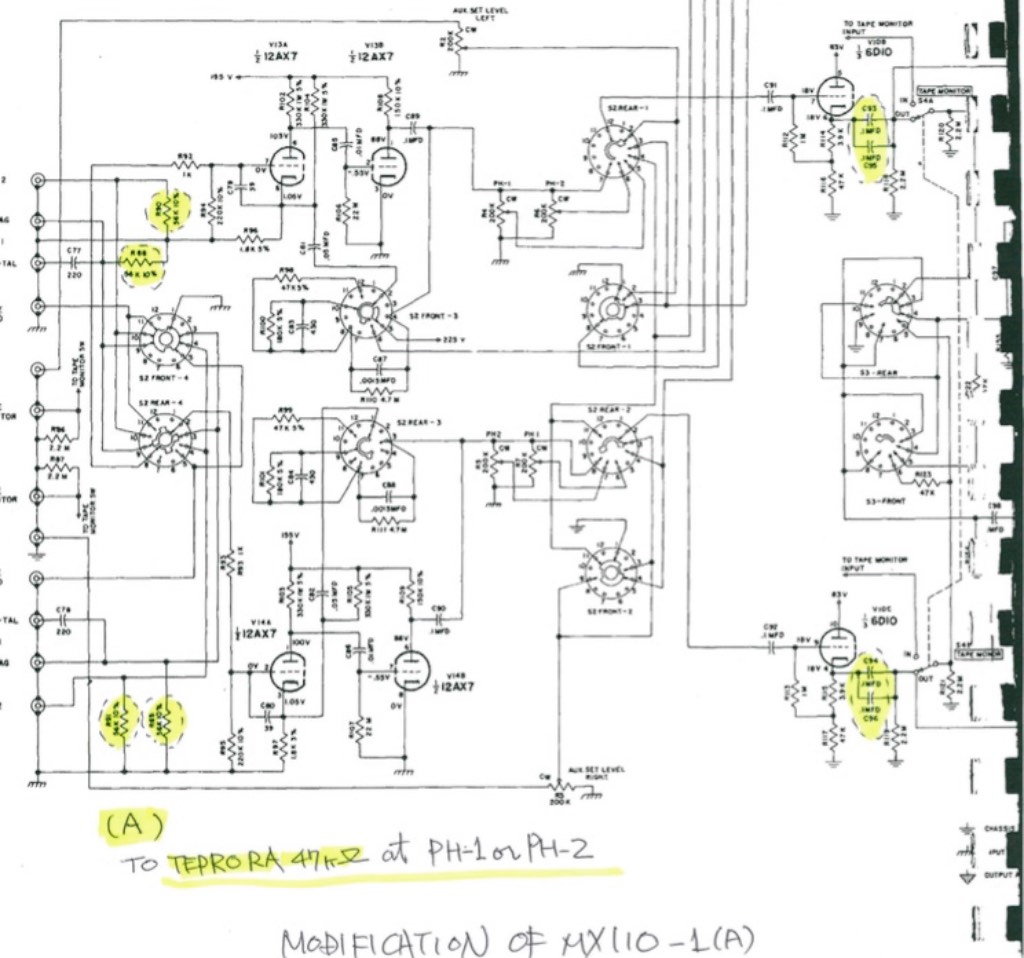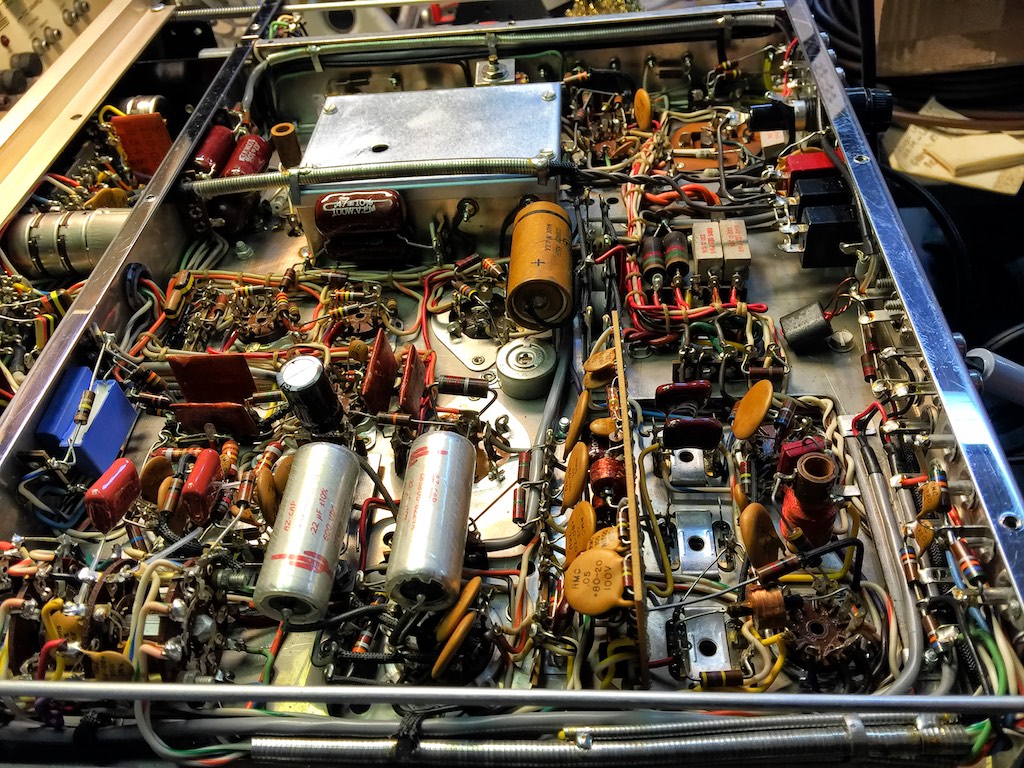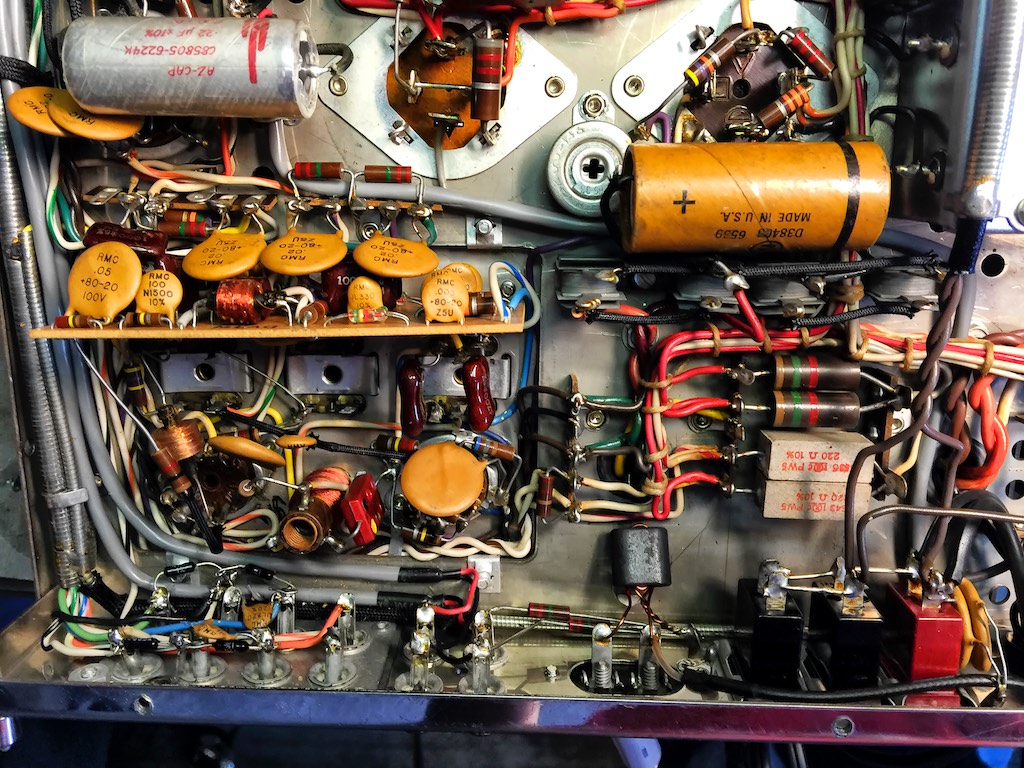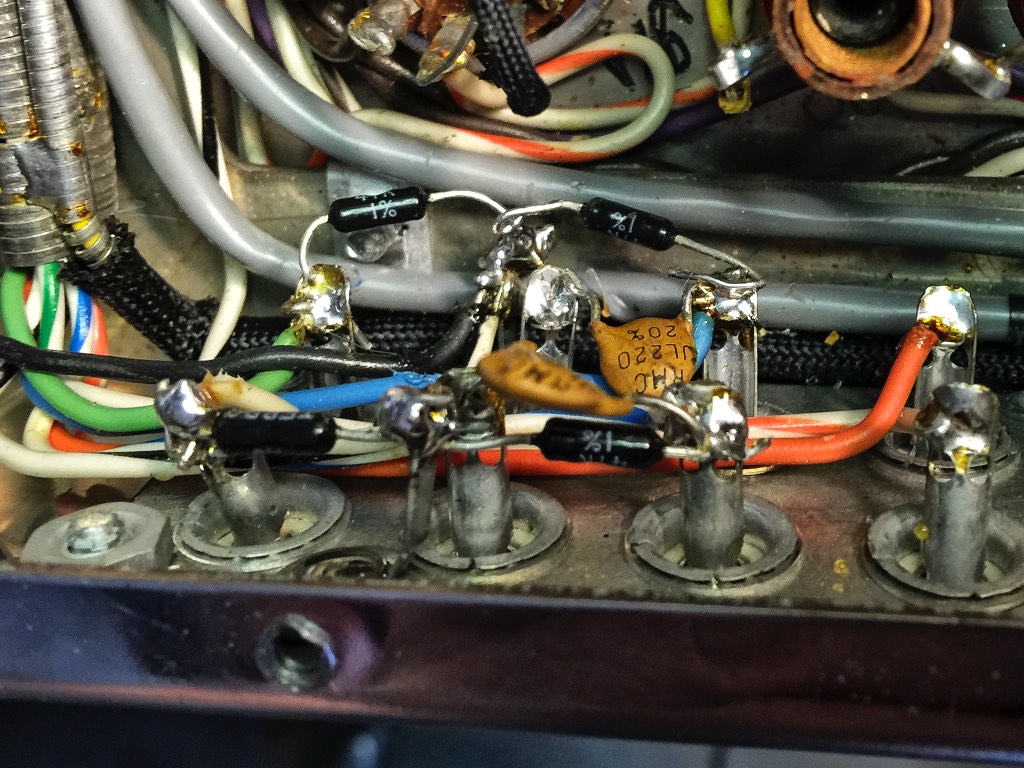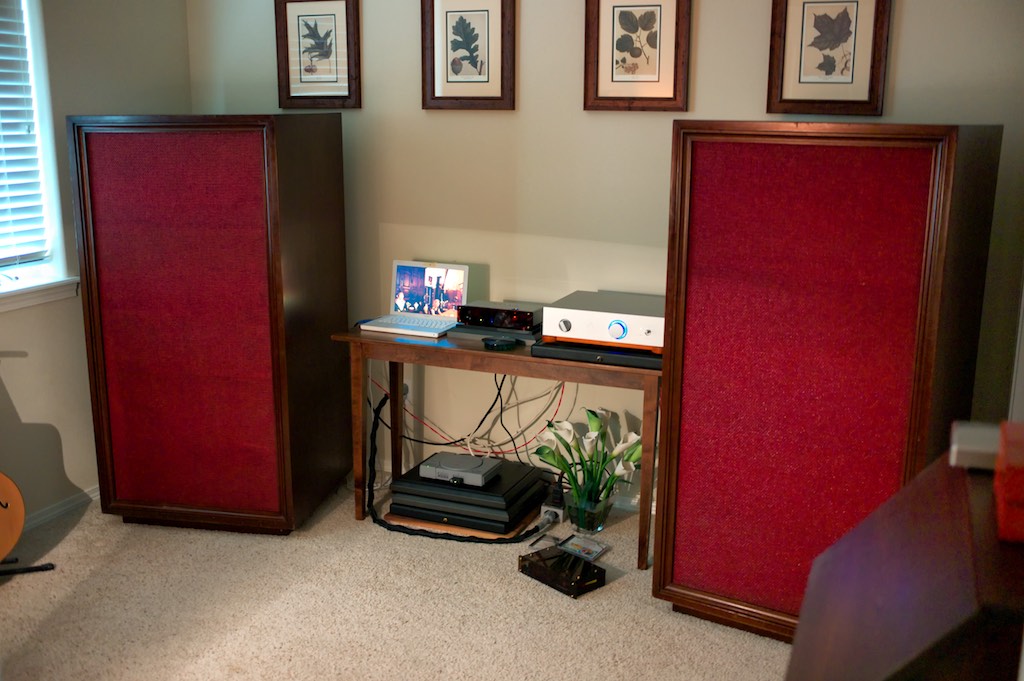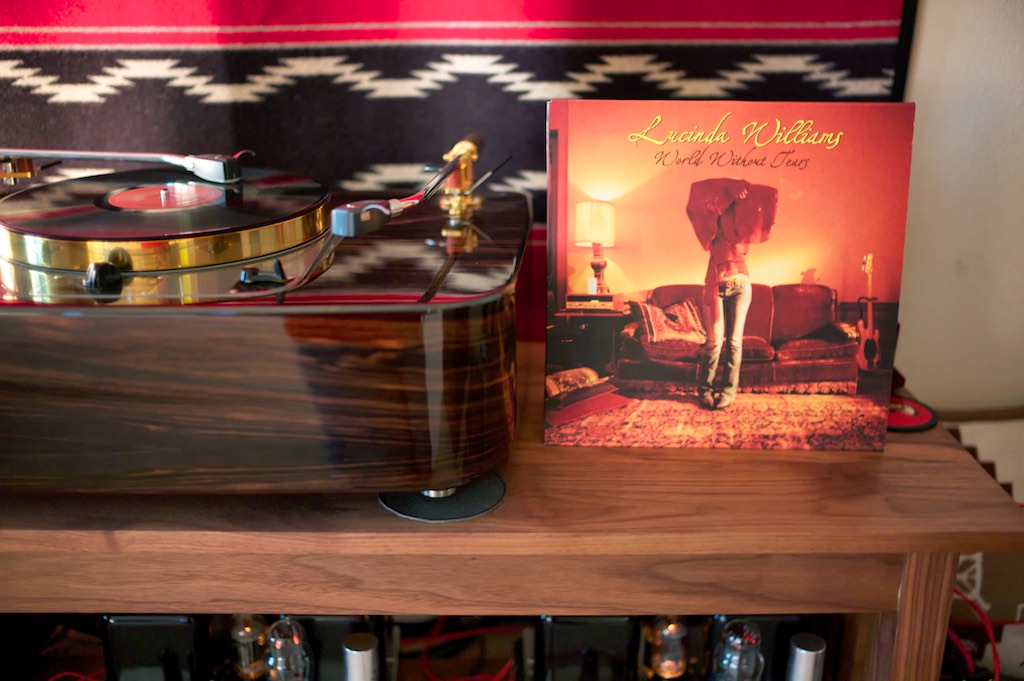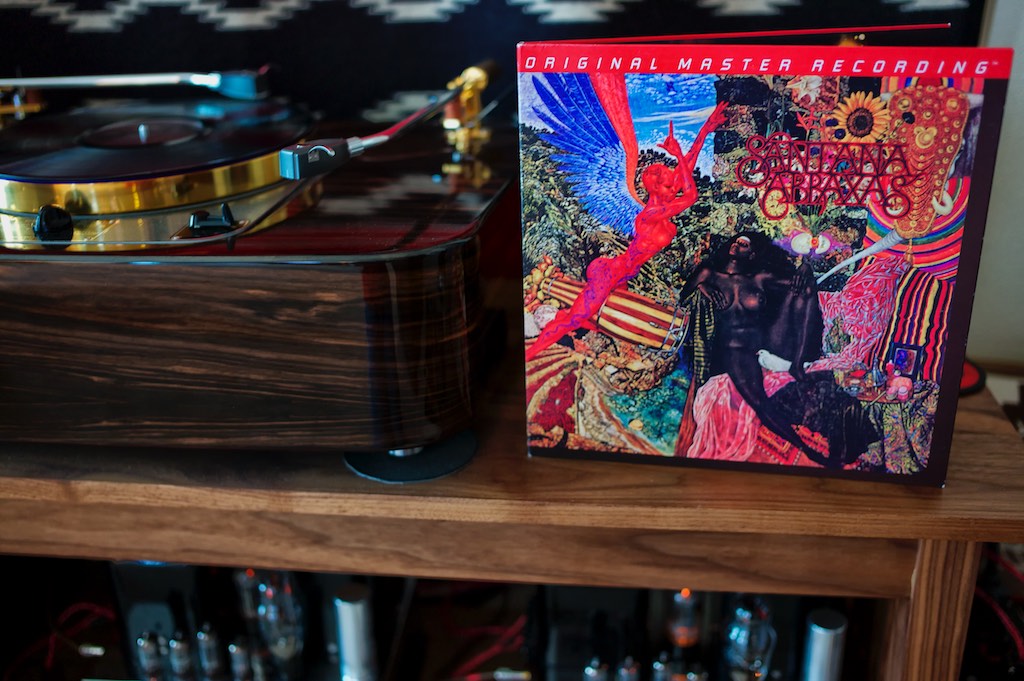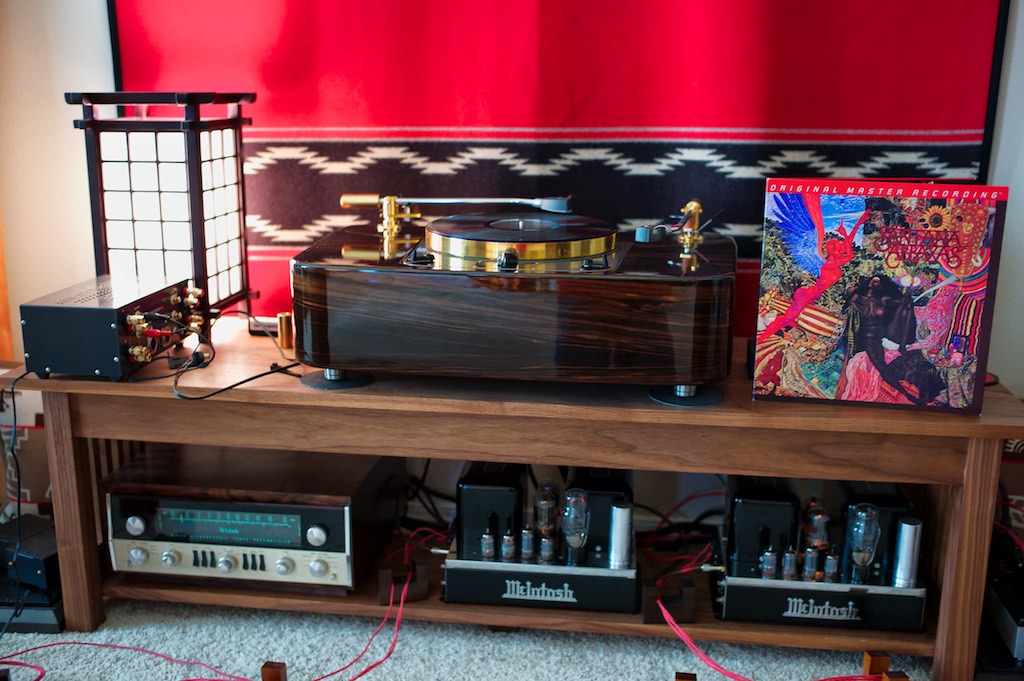If you read The Vintage McIntosh Experience article in Issue 77 of Positive Feedback you know I'm a big fan of the vintage McIntosh MX110Z tuner-preamplifier.
The MX110Z makes vinyl & FM sound astonishingly good, it even makes digital your friend. Performance-wise it can easily hold its own against contemporary preamplifiers, and feature-wise it outclasses any modern preamplifier on Planet Earth. The MX110Z ranks way up there among the best audio purchases I've ever made.
Yazaki-san has told me about some of the modifications he made to his vintage Marantz 7 preamplifier, and what a great improvement they brought about. He then told me that he thought some of those modifications would make a similar 'Real Sound' improvement to my MX110Z, and the Real Sound Adventure with my vintage McIntosh MX110Z was born.
Yazaki-san suggested we start our MX110Z adventure with its phono stage by making two modifications.
The first modification (A) was to replace the stock 56KΩ phono stage input resistors for PH-1 and PH-2 with Tepro RA 47KΩ metal film resistors, which Yazaki-san considers to be the very best for use in this application.
Yazaki-san told me that the phono stage's sound quality depends mainly on this resistor, and that "Gary-san (Tepro) said it was developed special for audio use. For about this resistor, Banno-san and I have never found the weakness of its sound. It is a very rare case for us."
The second modification (B) was to change two key phono stage capacitors to the superb 0.22 uF Arizona Capacitors, either the Red Cactus (custom 'Top Secret' capacitor used in SPEC electronics, not available for purchase), the Blue Cactus ("gorgeous vintage American tone color, open and natural"), and the Green Cactus ("noble European timbre, smoother and more open air character").
We (Yazaki-san, Ron-san, and I) used the Blue Cactus & Green Cactus Arizona Capacitors in the vintage McIntosh MC30 adventure with superb results. We were really impressed with the way things came out (see Positive Feedback Issue 81).
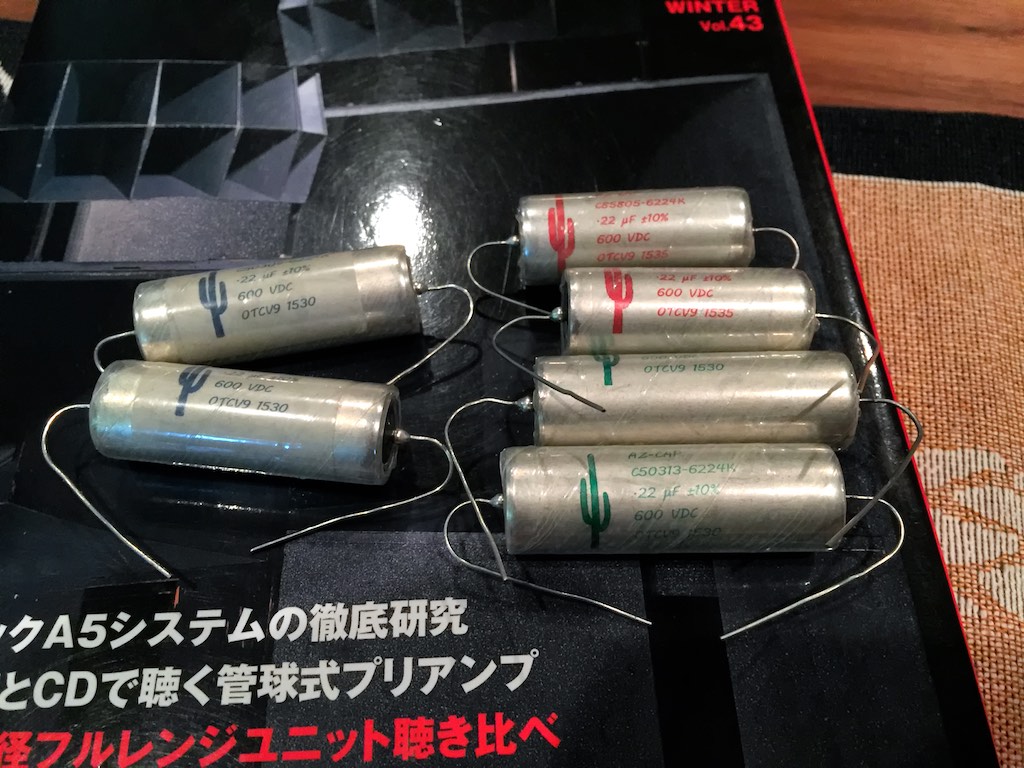
Left are the 0.22 Blue Cactus capacitors, right top are the Red Cactus capacitors, and right bottom are the Green Cactus capacitors.
To look inside at the circuitry of the MX110Z is a bit intimidating, as there are many tightly packed discrete components, most of which are due to the FM tuner, and a rather smaller section that comprises the phono stage.
As Ron-san and I looked at the crowded interior of the vintage MX110Z, we decided we should go with the Red Cactus capacitors, first because their smaller size made them easier to fit in the limited space, but also because we wanted to hear what these proprietary, not available for sale, 'Top Secret' capacitors sounded like in the MX110Z. You can see the phono section to the left (two photos above, and below) where the two 0.22mF Red Cactus Arizona Capacitors are.
Yazaki-san also told me, "One more point is, you might find the FM sound and AUX input sound would be improved with this Red Cactus modification too, because the modification is the first stage cathode follower of the high level input."
First Ron-san removed the old capacitors from the circuit, then soldered in the Red Cactus capacitors in their place.
Next Ron-san desoldered the stock 56KΩ phono stage input resistors for PH-1 and PH-2 and replaced them with Tepro RA 47KΩ metal film resistors.
Those black resistors in the bottom left of the photo are the Tepro RA resistors.
Here's a closer look.
Leo-san and I watched over Ron-san's shoulder as he made all the modifications, then as Ron-san finished up and buttoned up the MX110's chassis, we reconvened at Jeff's Place for a little listening session, both to the Real Sound modified MX110Z, and also the Maestro's Custom VOTTs (more about this at a later time).
I'll update you with listening impressions soon!
¸¸.•*¨*•♫♪
I got up this morning, and after a couple cups of coffee & answering correspondence while listening to the Maestro's VOTTs stream Jazz24 out of Seattle, I was excited to get some vinyl out and listen to Yazaki-san's 'Real Sound' modifications to the phono section of the MX110Z.
Last night, Ron, Leo, and I listened to a number of albums ranging from jazz, pop, and rock on the 'Real Sound' MX110Z, and we were really impressed with what we heard, particularly given the caps & resistors had zero run-in time on them.
Ron had a big smile on his face and was enjoying the result of his handiwork on the MX110Z, and Leo was wanting to make the same changes to his vintage Mac - that's really all you probably need to know, right there!
My first impressions from last night: huge sense of room filling space; deep, punchy, and articulate bass response; very transparent with lots of resolution; extremely 'real' timbral textures; and a rich, warm, sensual, liquid, presentation of the music. A very gratifying outcome!
After a brief listening session Ron & Leo headed for home, and I sat down to write the preliminary blog post (above) about the 'Real Sound' modifications to the MX110Z.
First up this morning, I decided I wanted to listen to Lucinda Williams' World Without Tears, which is my favorite among Lucinda's albums. Lucinda is the daughter of poet Miller Williams and the literary influence shows in her song writing, and Lucinda's lyrics cut right to the bone on this hard hitting, dark, album.
Keep in mind these preliminary listening impressions are for capacitors & resistors that don't have any time on them at all, so they'll continue to 'bloom' and improve over the next 100 hours or so from what I'm reporting on here.
World Without Tears is a wonderful recording, with incredible musicianship, but it suffers from being a bit forward & edgy sounding in places. In other words, World Without Tears is a great candidate for remastering on 45RPM by Analogue Productions! (I hope Chad is reading this!)
Here's what I heard: Huge space. The sense of room filling space from World Without Tears jumped off the scale with these mods to the MX110Z, and it's a definite improvement to the MX110's ability to reproduce a sense of billowing recorded space.
The sense of transparency & resolution also jumped way up, with lots of subtle musical details coming forth that I hadn't noticed before, and more importantly, the timbral textures & tone color sounded incredibly 'real'.
Another thing I noticed is that I can play music at live levels of loudness without my ears overloading, distorting, and shutting down, as they can do when things aren't working quite right in a hi-fi rig. That's a good sign.
The 'Real Sound's mods to the MX110Z didn't completely banish the bit of forward & edgy sound that appear in places on World Without Tears, but it sounds way better than I've ever heard it sound before on anything, and it is a completely enjoyable listening experience.
Given the considerable increase in transparency & resolution that the 'Real Sound' phono mods also sound more rich, warm, sensual, and liquid. That's a little bit of surprise for me, because that combination of traits rarely appear together. Very gratifying!
Next I decided to get out my Mobile Fidelity version of Santana Abraxas. You've heard me grouse for years about Mobile Fidelity's chosen balance for their albums, which I think are often more hi-fi than real-fi, but I think that's their thing, they're trying to appeal to audiophiles, so they tweak things up a bit over 'real'.
First thing I noticed was the transparency, resolution, and huge sense of space that completely filled my living room. The 'Real-Fi' mods don't completely fix the 'Mo-Fi' balance, but much like with World Without Tears, they do make the wonderful music of Carlos Santana come alive, like it should.
Ok, so that's it for now. I'll let the caps & resistors run-in for a while and I'll report back with some more impressions.
Thanks for stopping by!




